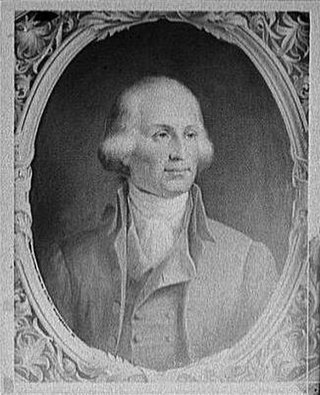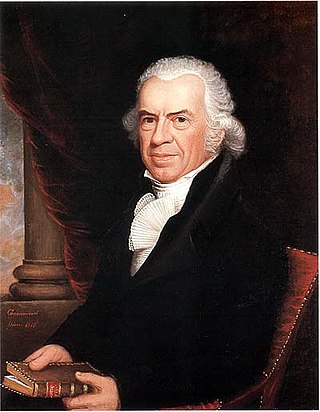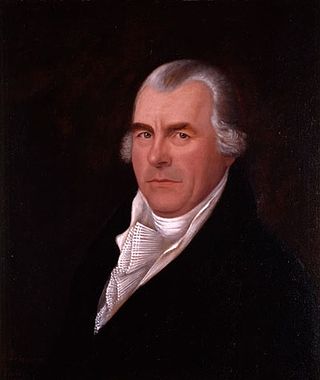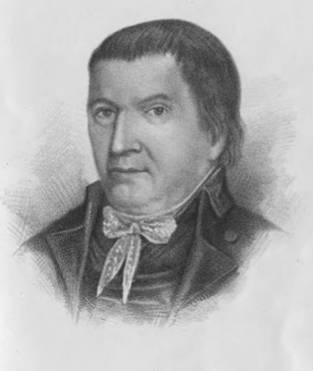Further reading
John C.L. Clark, "'The famous Doctor Stearns.' A biographical sketch of Dr. Samuel Stearns with a bibliography", Proceedings of the American Antiquarian Society45(2): 317-424. 1935
Samuel Stearns (1741–1810) was an American astronomer, doctor, author and publisher.
Stearns was born 13 July 1741 at Bolton, Massachusetts. He lived at Paxton, Massachusetts, from 1771 until 1784, from there issuing his annual The North-American’s almanack. He moved to Brattleboro, Vermont, where his regular almanac became The Universal Calendar: and Northamerican Almanack. He also published the first ever nautical almanack (1792) to be printed in America.
His trade was medicine but he also studied herbalism and astronomy. The book Annals of Brattleboro, 1681-1895 states of him that: "His fame as an astronomer led many of the inhabitants to consult him on the turn of future events." His sister married William Herschel, the astronomer.
Stearns was a British Loyalist during and after the American Revolutionary War, which caused him to be falsely accused of several crimes and falsely imprisoned. He was forced at various times to flee to the British, first in Long Island, New York (1780–83), later to Britain itself. In 1790 he took a degree from the University of Aberdeen in Scotland, and travelled in Europe.
He returned to America and died at Brattleboro on 8 August 1810. He was buried at Prospect Hill Cemetery in Brattleboro. The Stearns papers are held at 2013 as: "Stearns, Samuel, Papers, 1784-1810; 1904-1935", as part of the American Antiquarian Society's Manuscript Collections.
John C.L. Clark, "'The famous Doctor Stearns.' A biographical sketch of Dr. Samuel Stearns with a bibliography", Proceedings of the American Antiquarian Society45(2): 317-424. 1935

Benjamin Banneker was an African-American naturalist, mathematician, astronomer and almanac author. A landowner, he also worked as a surveyor and farmer.

Thomas Secker was an Archbishop of Canterbury in the Church of England.

An almanac is a regularly published listing of a set of current information about one or multiple subjects. It includes information like weather forecasts, farmers' planting dates, tide tables, and other tabular data often arranged according to the calendar. Celestial figures and various statistics are found in almanacs, such as the rising and setting times of the Sun and Moon, dates of eclipses, hours of high and low tides, and religious festivals. The set of events noted in an almanac may be tailored for a specific group of readers, such as farmers, sailors, or astronomers.

Charles Willson Peale was an American painter, soldier, scientist, inventor, politician, and naturalist.

Samuel Osgood was an American merchant and statesman born in Andover, Massachusetts, currently a part of North Andover, Massachusetts. His family home still stands at 440 Osgood Street in North Andover and his home in New York City, the Samuel Osgood House, served as the country's first Presidential mansion. He served in the Massachusetts and New York State legislatures, represented Massachusetts in the Continental Congress and was the fourth Postmaster General of the United States, serving during George Washington's first term.

William Plumer was an American lawyer, Baptist lay preacher, and politician from Epping, New Hampshire. He is most notable for his service as a Federalist in the United States Senate (1802–1807), and the seventh governor of New Hampshire as a Democratic-Republican.

John Jeffries was an American physician, scientist, and military surgeon with the British Army in Nova Scotia and New York during the American Revolution. He is best known for accompanying French inventor Jean-Pierre Blanchard on his 1785 balloon flight across the English Channel.

Harrison Gray Otis, was a businessman, lawyer, and politician, becoming one of the most important leaders of the United States' first political party, the Federalists. He was a member of the Otis family.

Isaiah Thomas was an early American printer, newspaper publisher and author. He performed the first public reading of the Declaration of Independence in Worcester, Massachusetts, and reported the first account of the Battles of Lexington and Concord. He was the founder of the American Antiquarian Society.

Loammi Baldwin Jr. was an American civil engineer. His father was Col. Loammi Baldwin, a prominent civil engineer.

Elijah Brigham was a U.S. Representative from Massachusetts.
William Stedman was a U.S. representative from Massachusetts.

Ames' Almanack (almanac) was the first almanac printed in the British North American colonies. While Benjamin Franklin's Poor Richard's Almanack is the one often mentioned in contemporary history classes, at the time Ames' Almanack enjoyed a much larger readership. Franklin's publication had a circulation of 10,000 copies, while Ames' Almanack had a circulation of 60,000.
Samuel Hill was an engraver who worked in Boston, Massachusetts, in the late 18th and early 19th centuries. His engravings were published in the Massachusetts Magazine; Defoe's New Robinson Crusoe (1790); Lavater's Essays on Physiognomy (1794); American Universal Geography (1796); Cook's Three Voyages to the Pacific Ocean (1797). Hill's subjects extended from maps to literary illustrations to landscapes; portrait subjects included James Bowdoin, Rev. John Murray of Newburyport, Massachusetts, and Elizabeth White. Examples of Hill's work can be found in the American Antiquarian Society, Massachusetts Historical Society, and Museum of Fine Arts, Boston.

Dr Benjamin Vaughan MD FRSE LLD was a British political radical. He was a commissioner in the negotiations between Britain and the United States at the drafting of the Treaty of Paris.

Edmund Weaver was an English astronomer, land surveyor, and friend to William Stukeley. Weaver's The British Telescope ephemerides is considered an important 18th-century publication on the movement of planets.
John St Barbe (1742–1816) was a British naval officer. He later became a prominent English shipbroker and shipowner in London. His vessels were active in whaling, the transport of convicts, and in the slave trade.
Malachy Hitchins (1741–1809) was a Cornish astronomer and cleric.
Samuel Knight was a legal and political figure in Vermont during its period as an independent republic and the early years of its statehood. Among the offices in which he served were Associate Justice of the Vermont Supreme Court, and Chief Justice (1791-1793).

Luke Knowlton was a political leader of colonial Vermont, the Vermont Republic, and the state of Vermont. He served as a justice of the Vermont Supreme Court, a member of the Governor's Council, and a member of the Vermont House of Representatives.